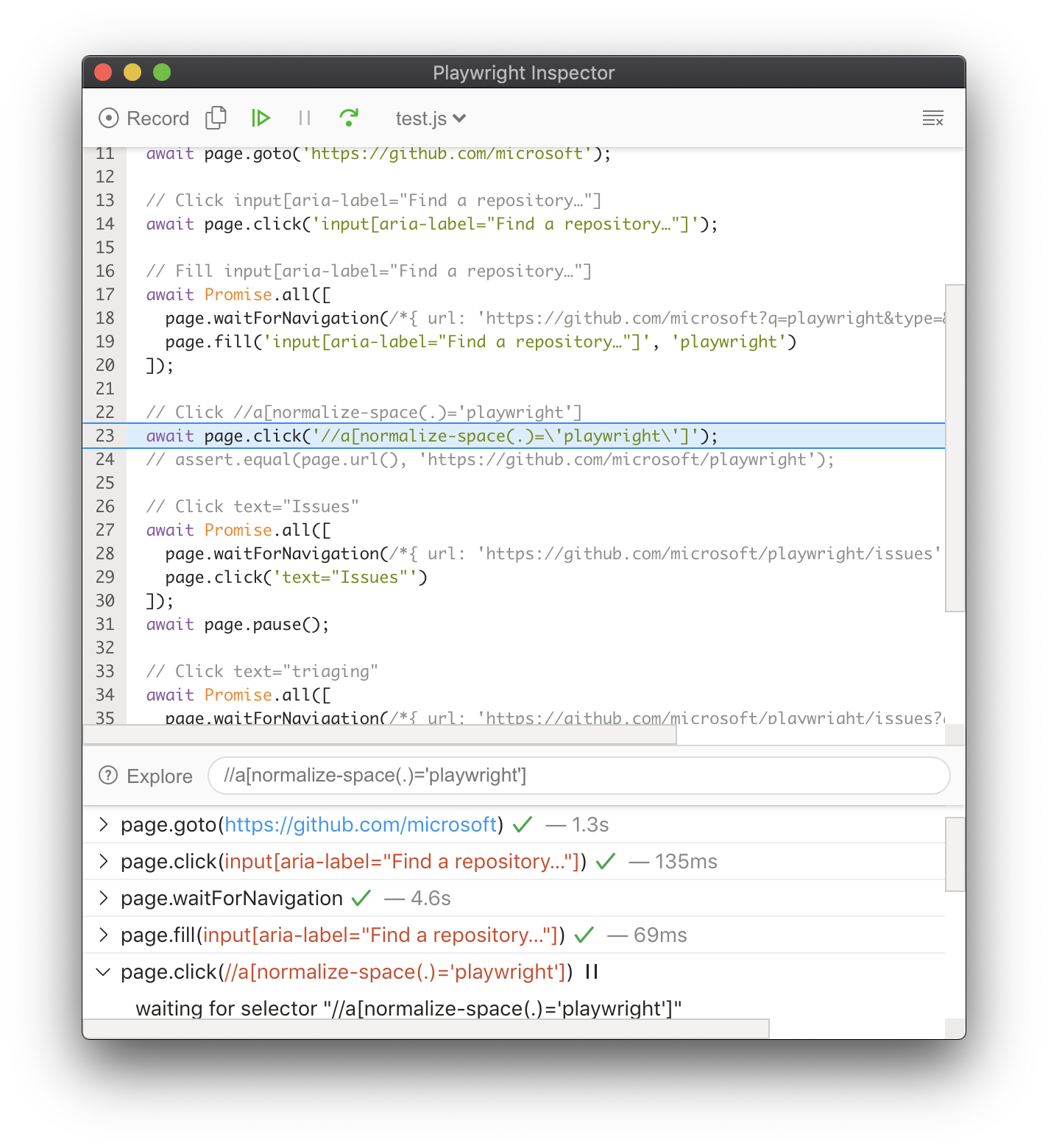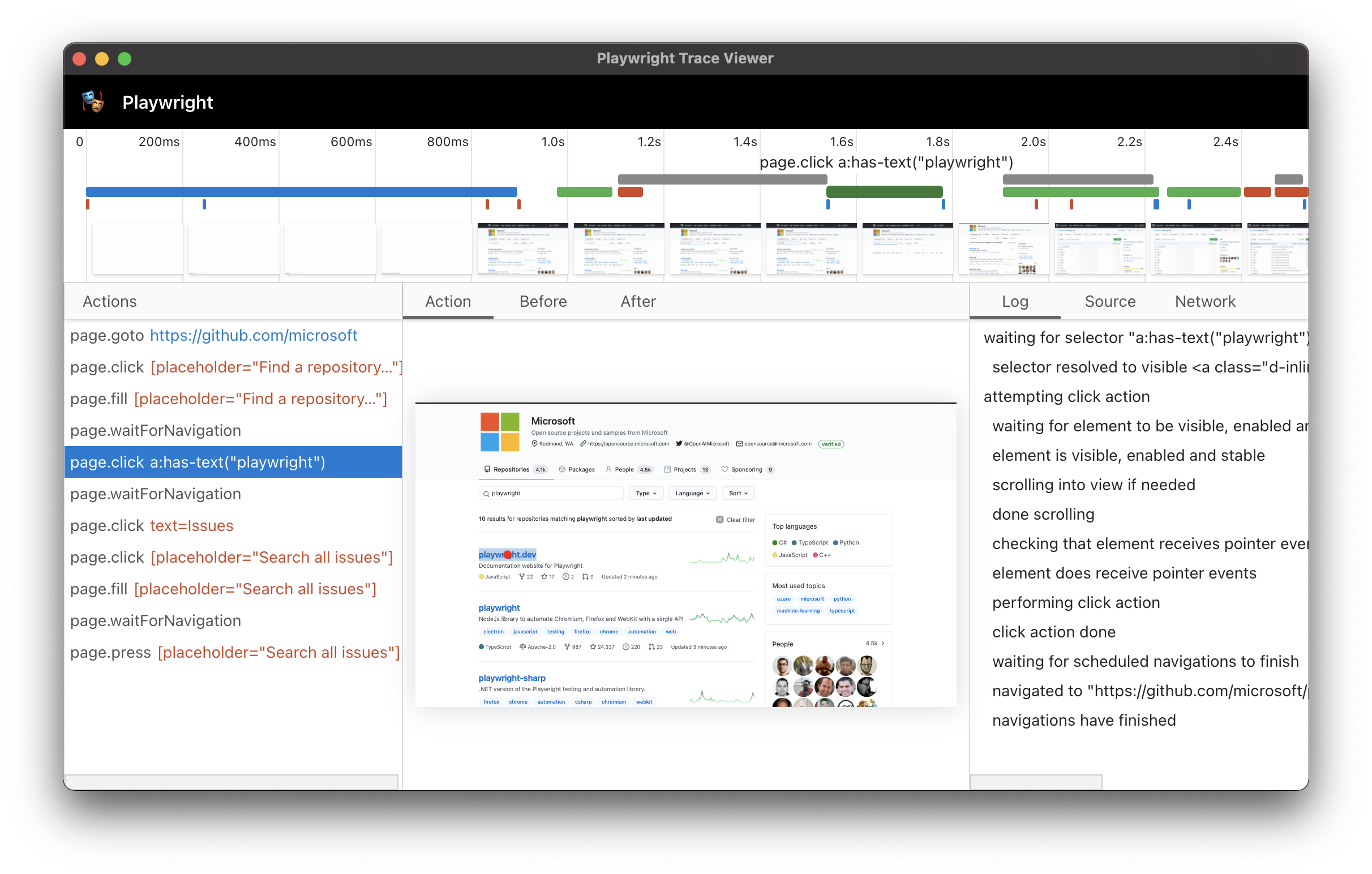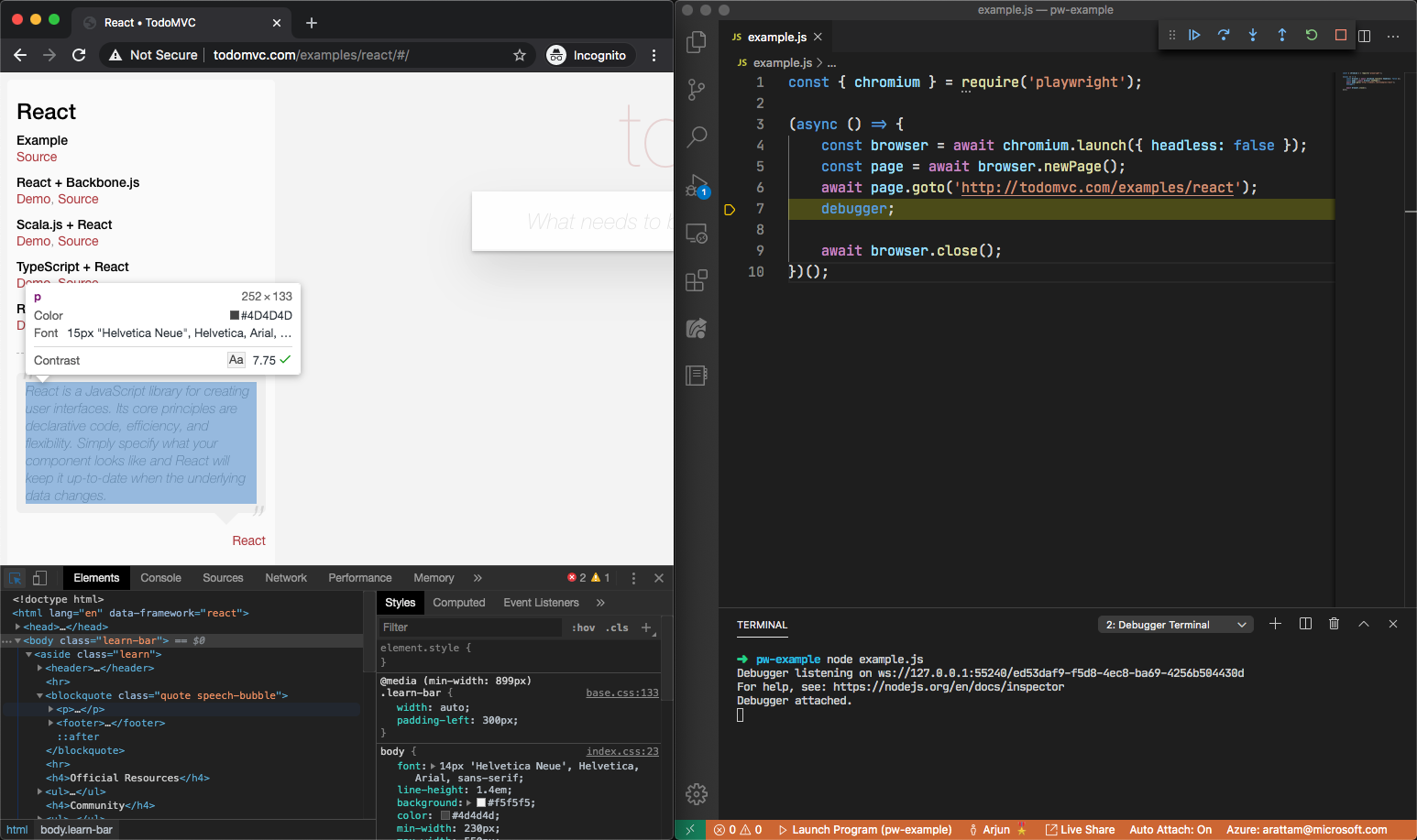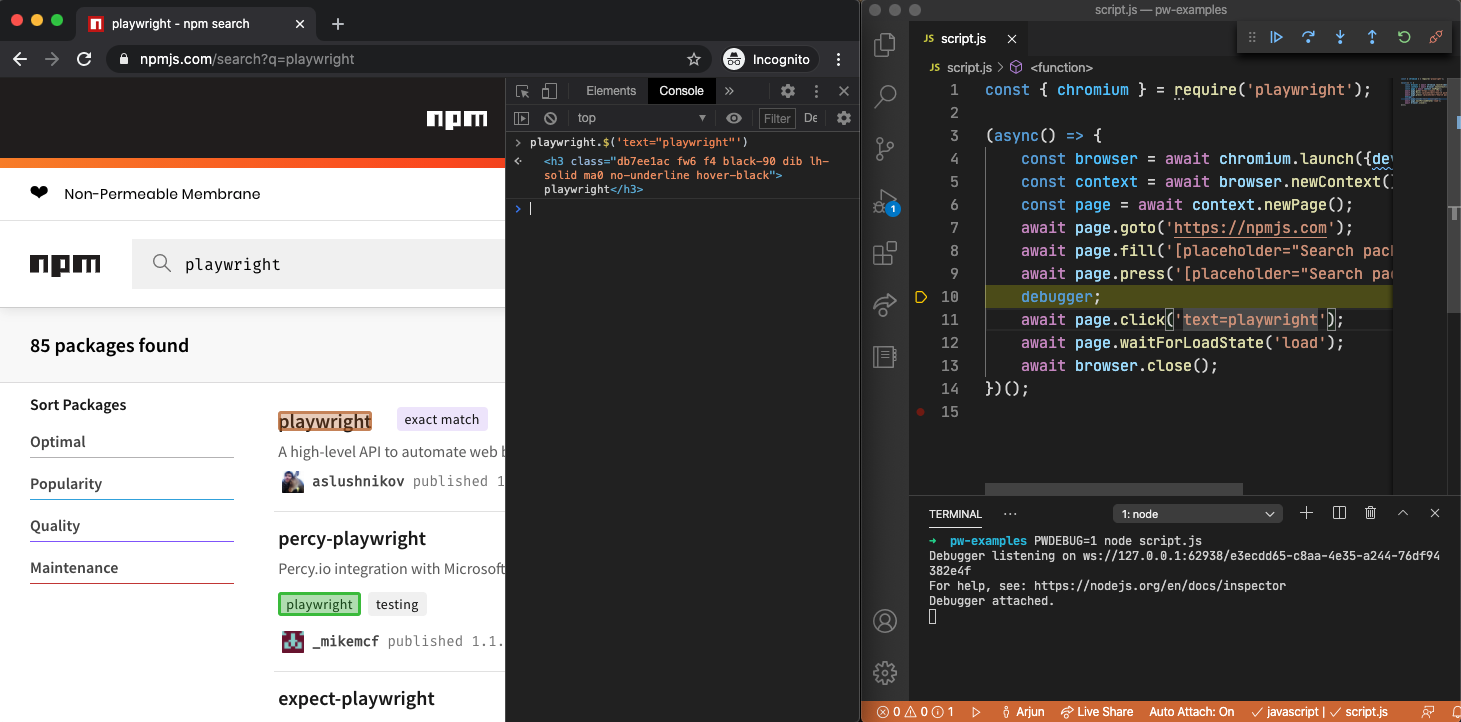Debugging tools
Playwright scripts work with existing debugging tools, like Node.js debuggers and browser developer tools. Playwright also introduces new debugging features for browser automation.
- Playwright Inspector
- Playwright Trace Viewer
- Run in headed mode
- Browser Developer Tools
- Run in Debug Mode
- Selectors in Developer Tools Console
- Visual Studio Code debugger (Node.js)
- Verbose API logs
Playwright Inspector#
Playwright Inspector is a GUI tool that helps authoring and debugging Playwright scripts. That's our default recommended tool for scripts troubleshooting.

Playwright Trace Viewer#
Playwright Trace Viewer is a GUI tool that helps troubleshooting test runs in a post-mortem manner.

Run in headed mode#
Playwright runs browsers in headless mode by default. To change this behavior, use headless: false as a launch option. You can also use the slowMo option to slow down execution and follow along while debugging.
await chromium.launch({ headless: false, slowMo: 100 }); // or firefox, webkitBrowser Developer Tools#
You can use browser developer tools in Chromium, Firefox and WebKit while running a Playwright script in headed mode. Developer tools help to:
- Inspect the DOM tree and find element selectors
- See console logs during execution (or learn how to read logs via API)
- Check network activity and other developer tools features

Using a page.pause() method is an easy way to pause the Playwright script execution and inspect the page in Developer tools. It will also open Playwright Inspector to help with debugging.
For Chromium: you can also open developer tools through a launch option.
await chromium.launch({ devtools: true });note
For WebKit: launching WebKit Inspector during the execution will prevent the Playwright script from executing any further.
Run in Debug Mode#
Set the PWDEBUG environment variable to run your scripts in debug mode. Using PWDEBUG=1 will open Playwright Inspector.
Using PWDEBUG=console will configure the browser for debugging in Developer tools console:
- Runs headed: Browsers always launch in headed mode
- Disables timeout: Sets default timeout to 0 (= no timeout)
- Console helper: Configures a
playwrightobject in the browser to generate and highlight Playwright selectors. This can be used to verify text or composite selectors.
# Linux/macOSPWDEBUG=console npm run test
# Windows with cmd.exeset PWDEBUG=consolenpm run test
# Windows with PowerShell$env:PWDEBUG="console"npm run testSelectors in Developer Tools Console#
When running in Debug Mode with PWDEBUG=console, a playwright object is available in Developer tools console.
- Run with
PWDEBUG=console - Setup a breakpoint to pause the execution
- Open the console panel in browser developer tools
- Use the
playwrightAPIplaywright.$(selector): Highlight the first occurrence of the selector. This reflects howpage.$would see the page.playwright.$$(selector): Highlight all occurrences of the selector. This reflects howpage.$$would see the page.playwright.inspect(selector): Inspect the selector in the Elements panel.playwright.clear(): Clear existing highlights.playwright.selector(element): Generate a selector that points to the element.

Visual Studio Code debugger (Node.js)#
The VS Code debugger can be used to pause and resume execution of Playwright scripts with breakpoints. The debugger can be configured in two ways.
Use launch config#
Setup launch.json configuration for your Node.js project. Once configured launch the scripts with F5 and use breakpoints.
Use the JavaScript Debug Terminal#
- Open JavaScript Debug Terminal
- Set a breakpoint in VS Code
- Use the
debuggerkeyword or set a breakpoint in the VS Code UI
- Use the
- Run your Node.js script from the terminal
Verbose API logs#
Playwright supports verbose logging with the DEBUG environment variable.
# Linux/macOSDEBUG=pw:api npm run test
# Windows with cmd.exeset DEBUG=pw:apinpm run test
# Windows with PowerShell$env:DEBUG="pw:api"npm run test